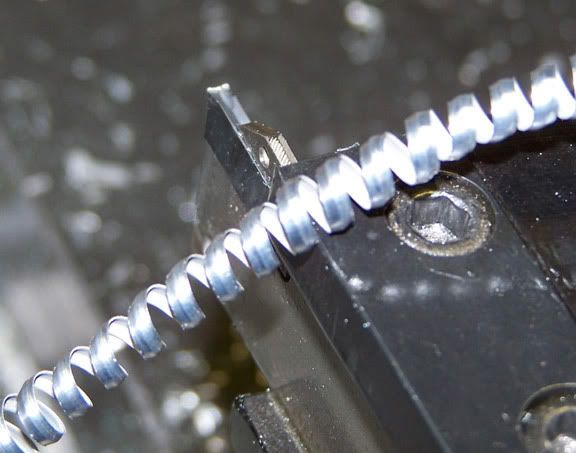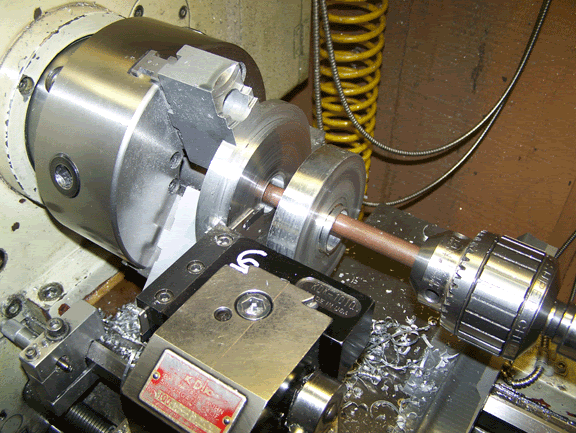Nick, The OP stated that he didn't know a lot about turning. RPM is universally known. SFM is a foreign language to a novice.
And....what matters more.....
The typical manual lathe has only few gears and no VFD.
Now we have a new one, no experience with it yet. A good machine.
But lets talk the old one.
(These RPM values are rounded)
really f****** slow....lots of speeds you dont need 80% of the time
280
350
500
800
1000
1600
The insert can do a 2" steel workpiece at 800 rpm, no sweat.
The machine can not.
That leaves only 500 and 350, depending on material. Sometimes even slower. 200 or so.
I dont need sfm if my machine has only 2-3 speeds relevant to parting off any certain workpiece size.
For all intents and purposes its reduced to high,low, and intermediate rpm.
Flick the levers....dont even think the numbers. This chatters. Flick lever 3 over. Still chattering ? Flick 3 back and 2 over. Now at 350....lots a oil. Crisp clean chrips without signs of rubbing or chatter. Good.
Parted 3" steel that way on a crappy Colchester Bantam ...which is less than 1000pounds....
Listen to the machine....it will tell you a lot...
And yes, put the tool on center. Old crappy HSS blades may flex. A good insert sword is ridiculously strong and stable.
And if you cannot push the mfg's SFM recommendations because the machine cannot handle it...all of Nicks "no Oil talk" becomes old...very fast. If your cutting parameters are too low to prevent built up edge.....lubrication is the only way to stop the horrible groaning and grabbing .
Canola oil....LOTS of it.....works just as good as most of these modern "green" cutting oils. (Which are more often than not vegetable based too).
If you have flood....use it....





 You need to first know what it sounds and looks like before you need to hit the ground! If you pick up chatter either your speed is too fast or your feed is too slow. If you get insert wear, not breakage, are your chips freely flowing out of the groove. If you get breakage is your tool set up on the correct height and is your part "catching" not interfering with the insert. Is the blade flexing because of too much sickout. Is the finish jagged because of chip rubbing? All these things, in my opinion, cannot be taught with using a power feed.
You need to first know what it sounds and looks like before you need to hit the ground! If you pick up chatter either your speed is too fast or your feed is too slow. If you get insert wear, not breakage, are your chips freely flowing out of the groove. If you get breakage is your tool set up on the correct height and is your part "catching" not interfering with the insert. Is the blade flexing because of too much sickout. Is the finish jagged because of chip rubbing? All these things, in my opinion, cannot be taught with using a power feed.